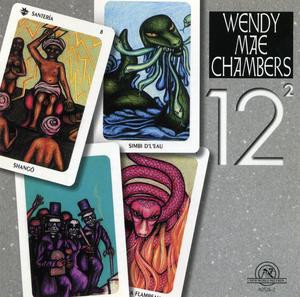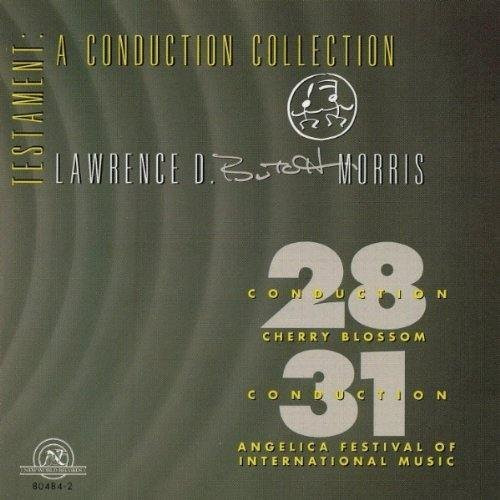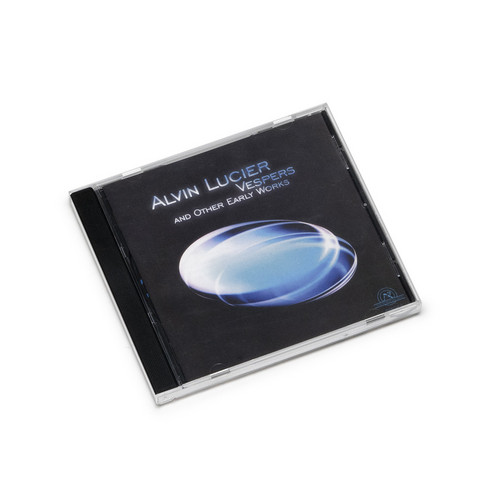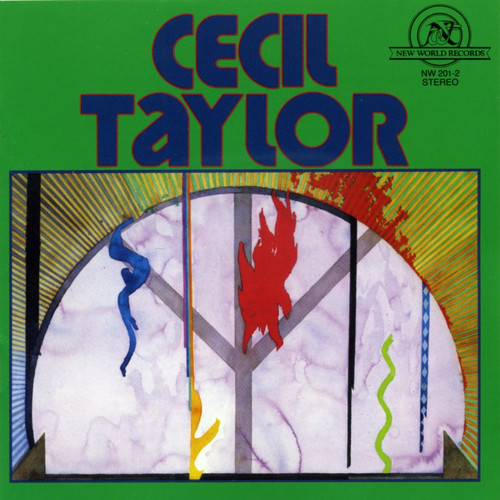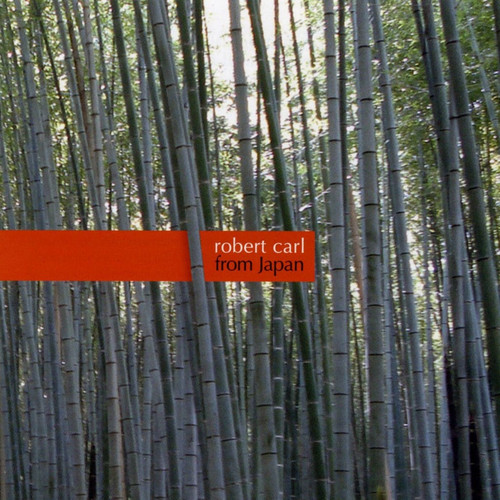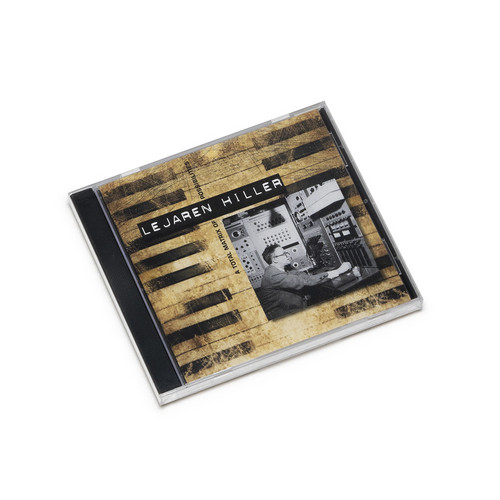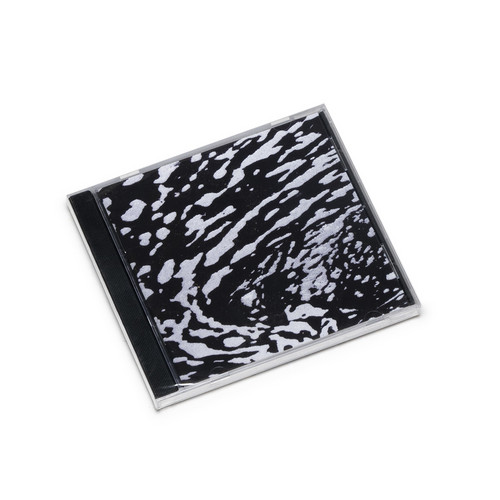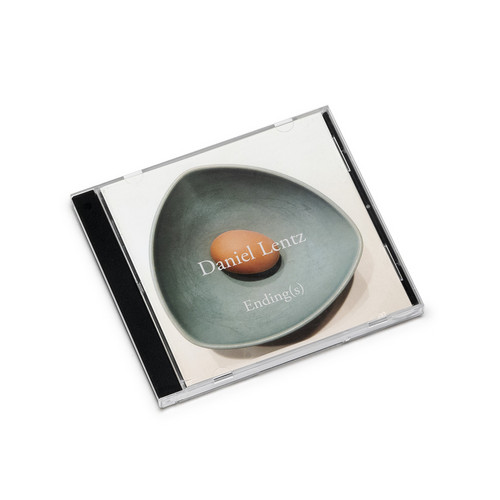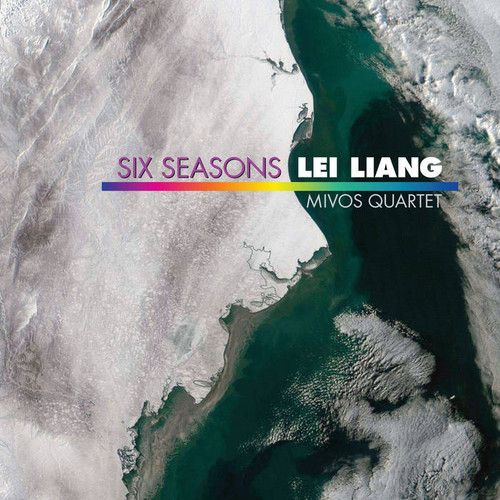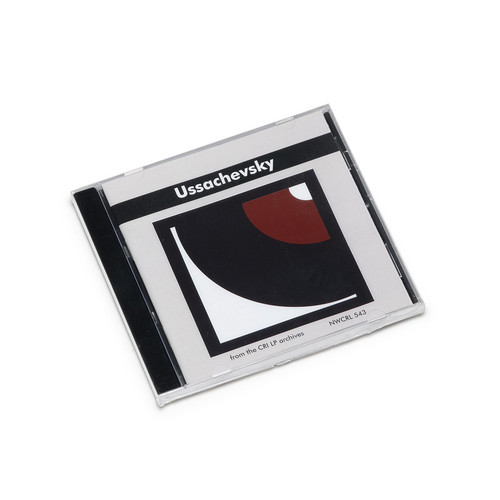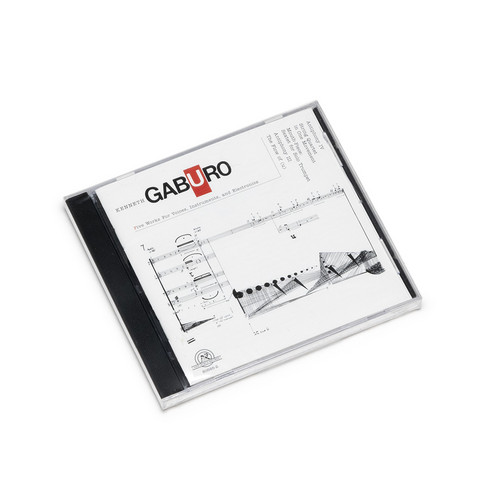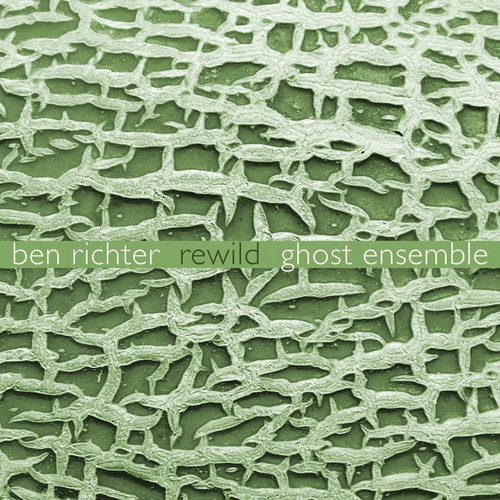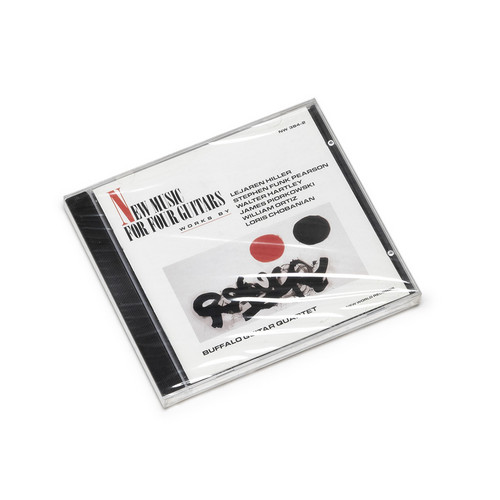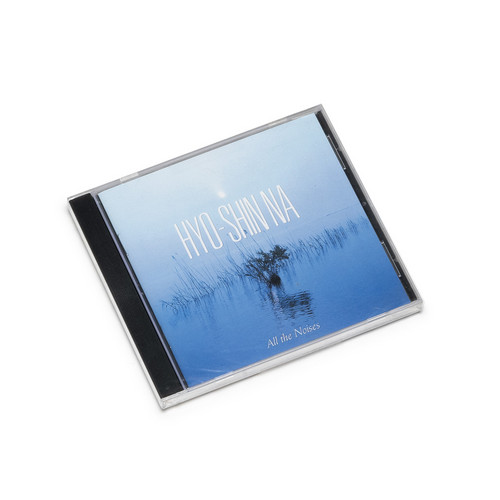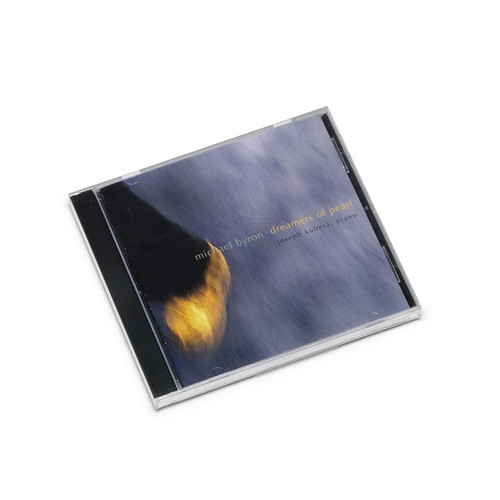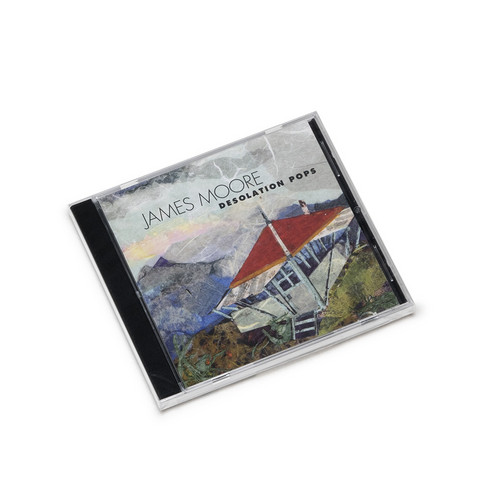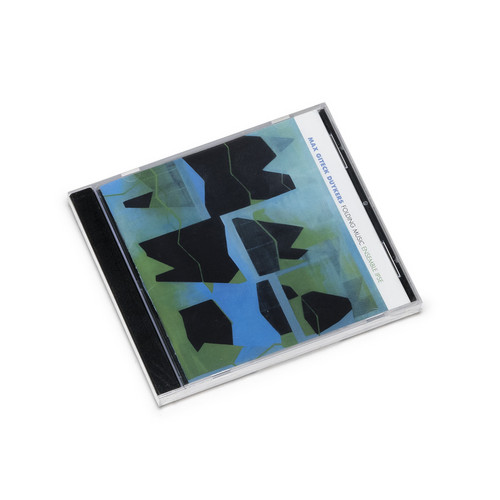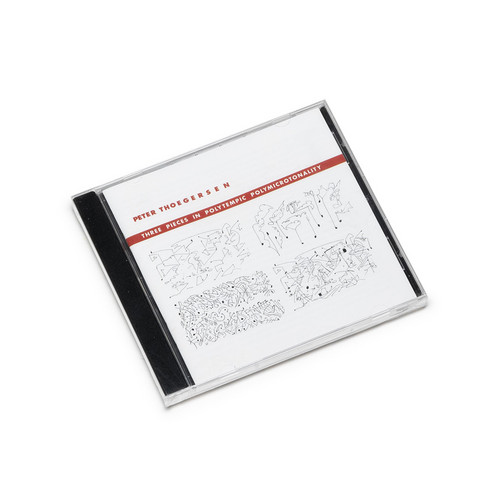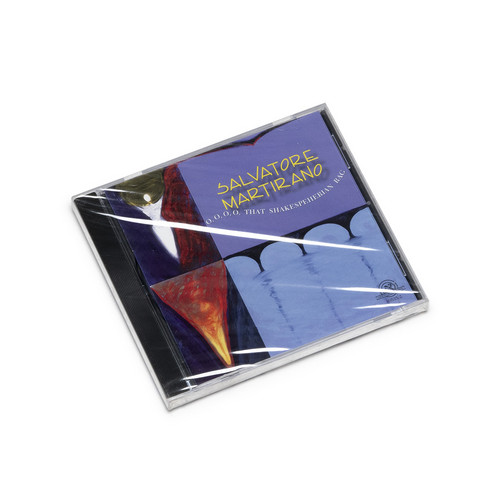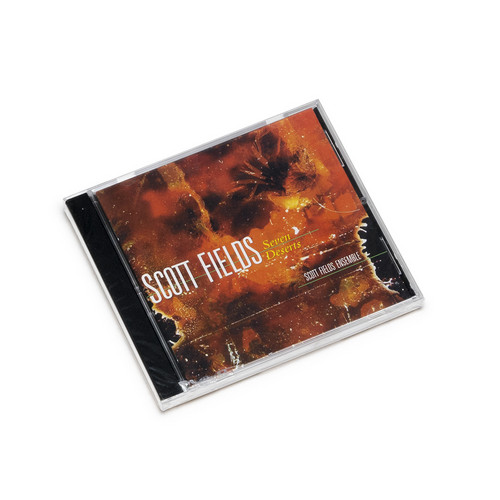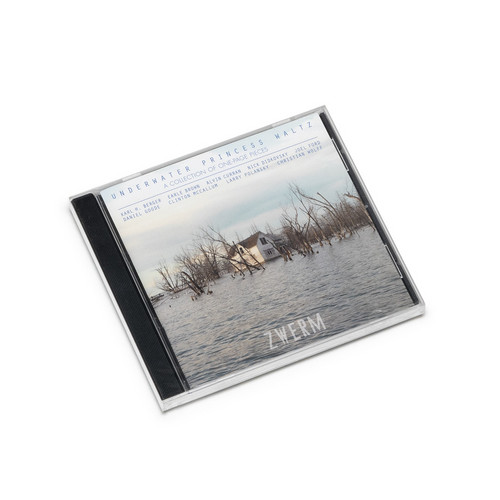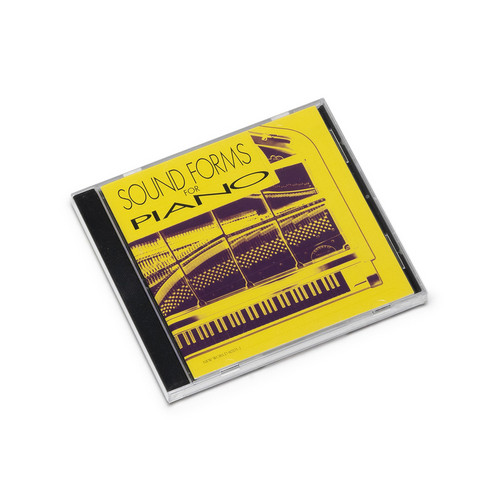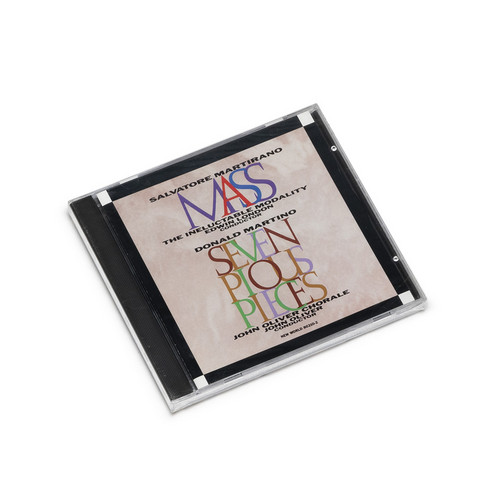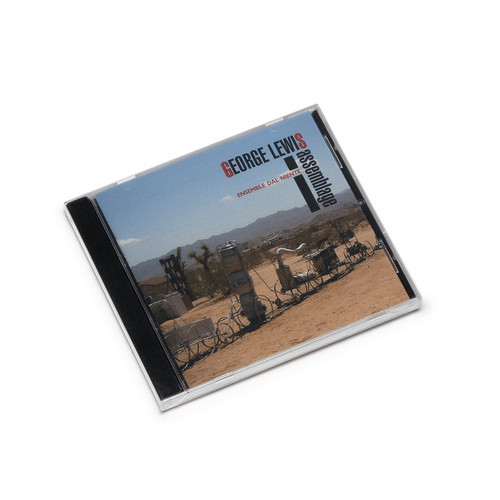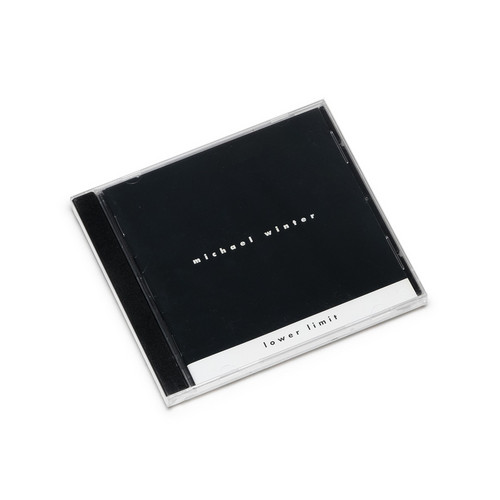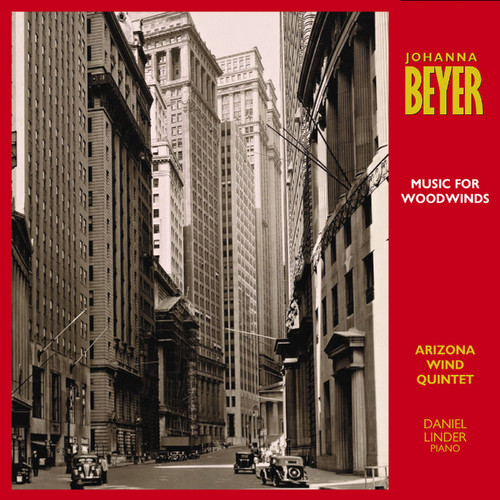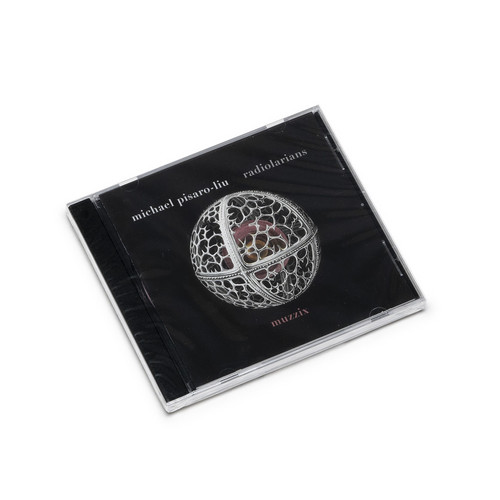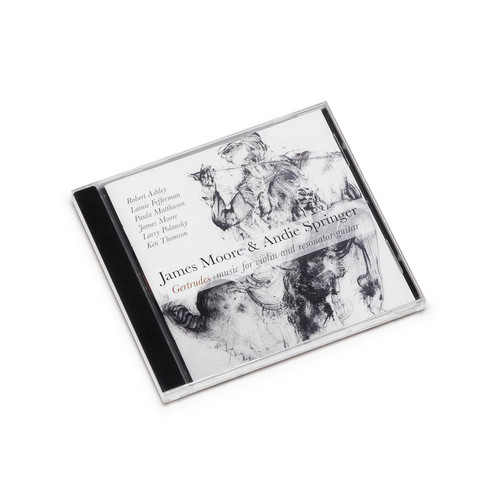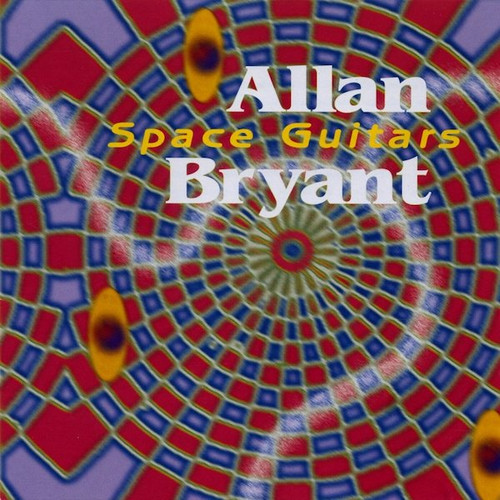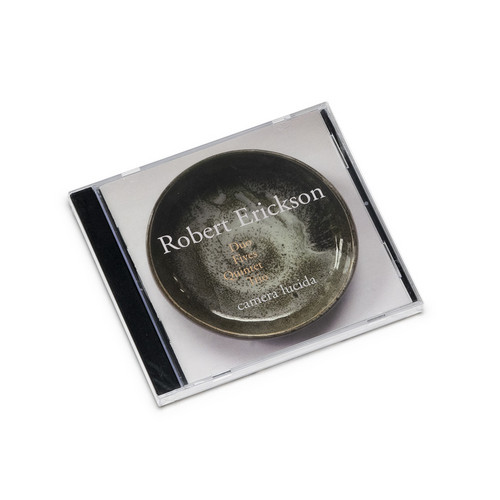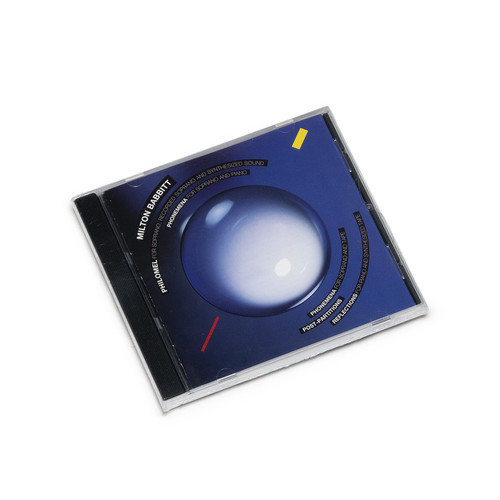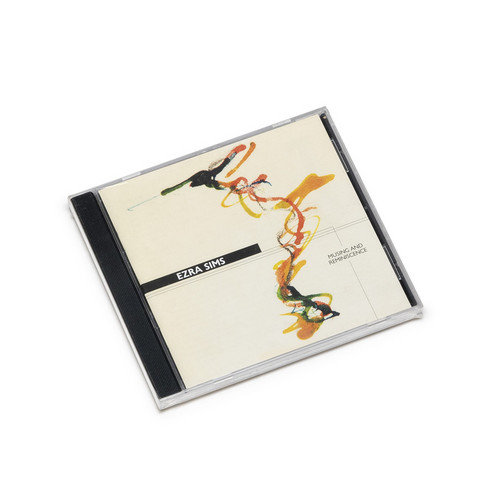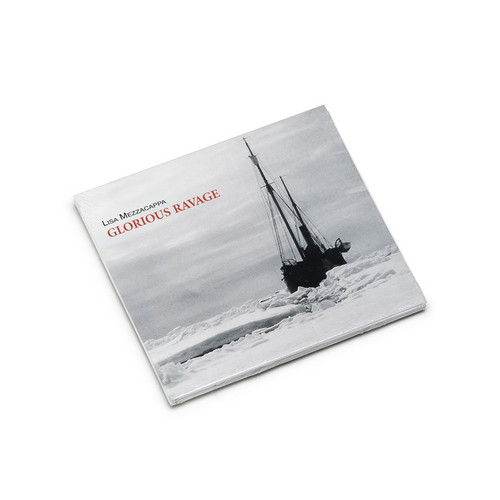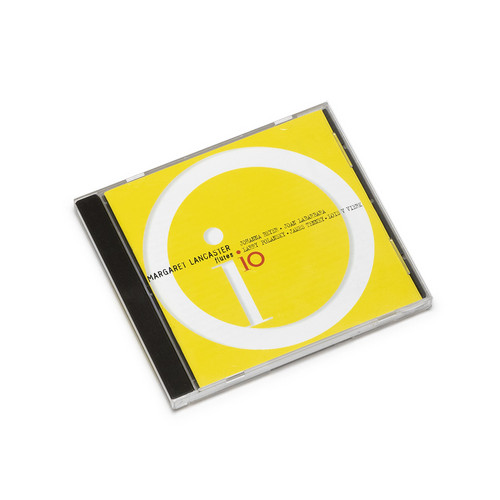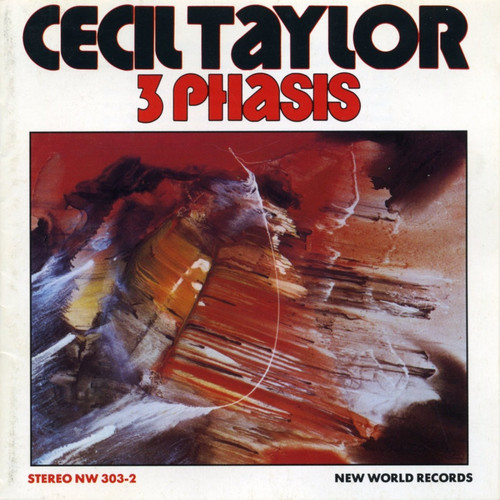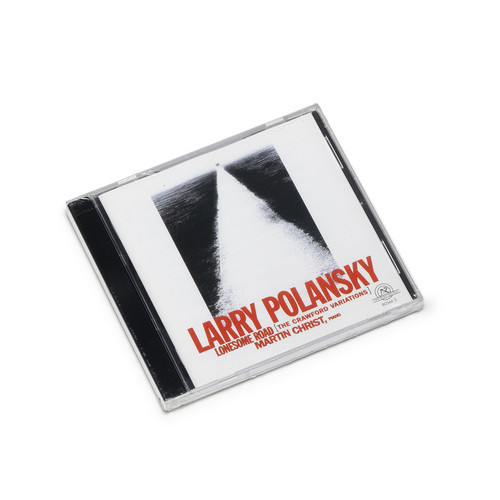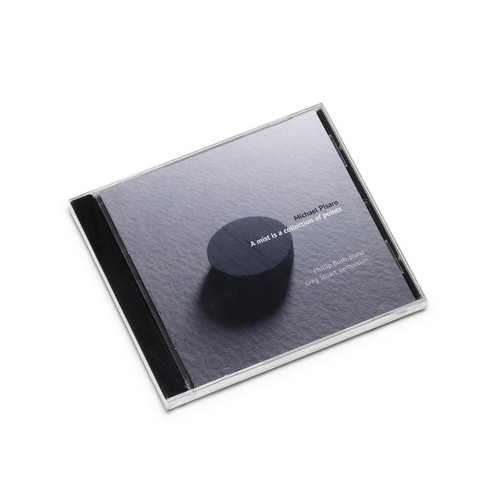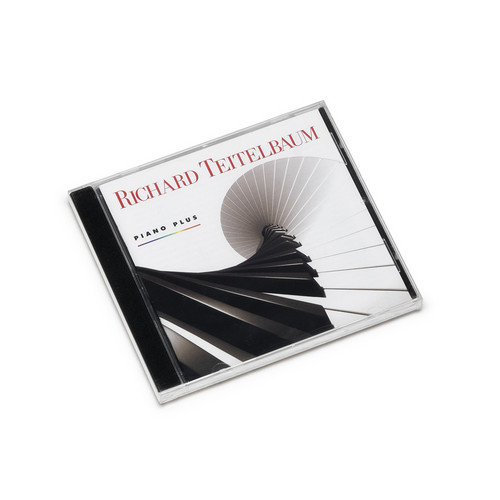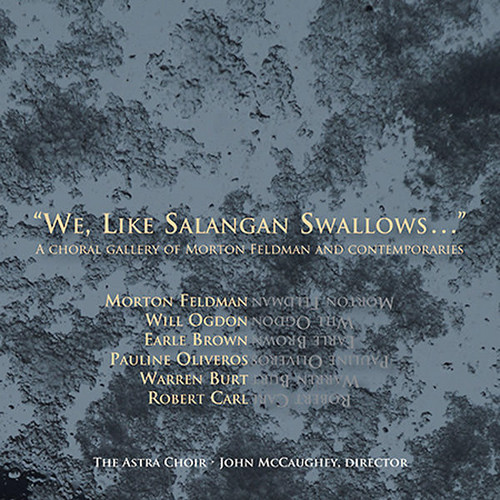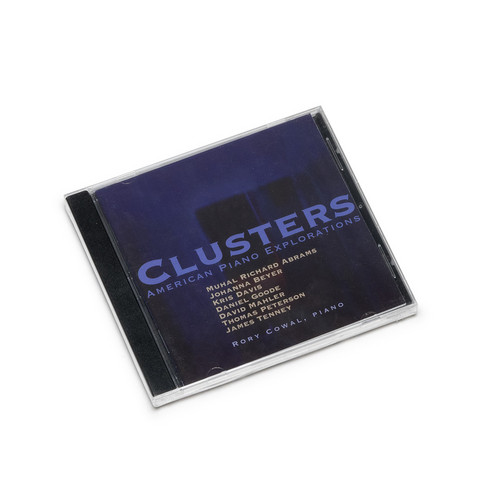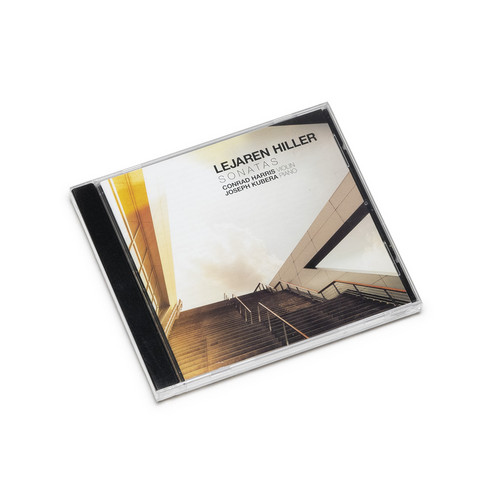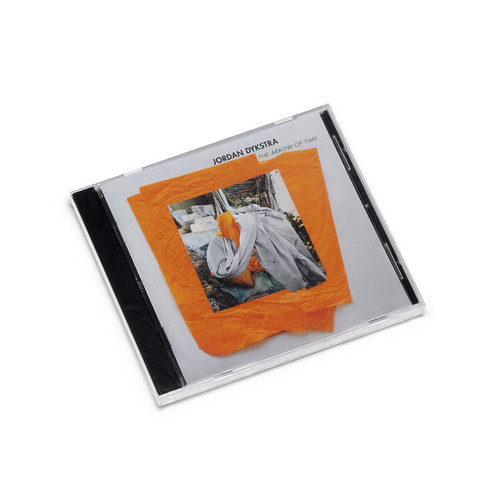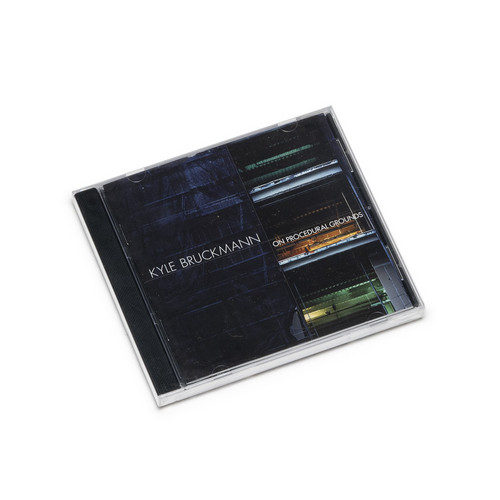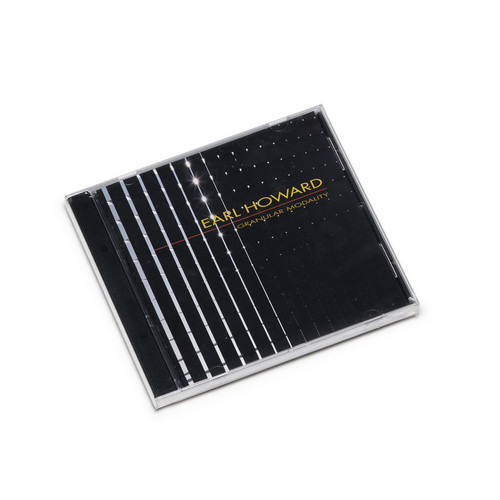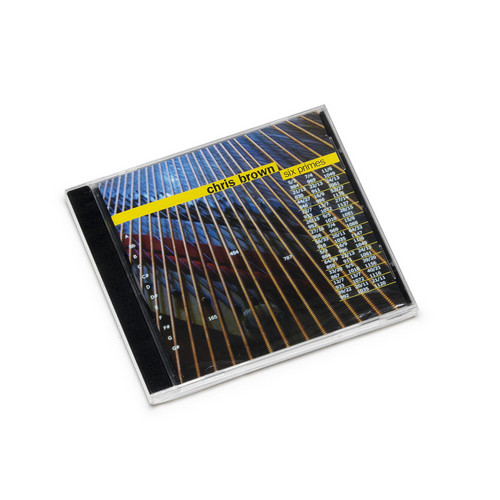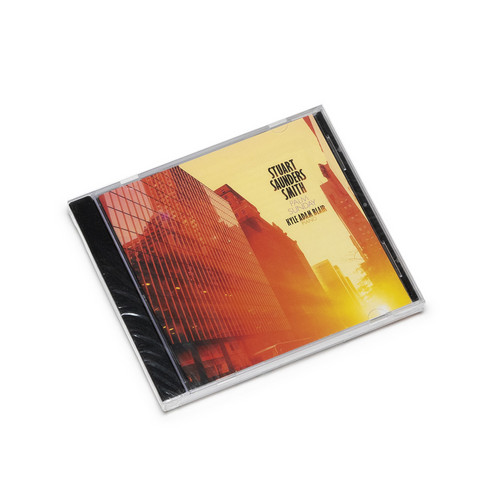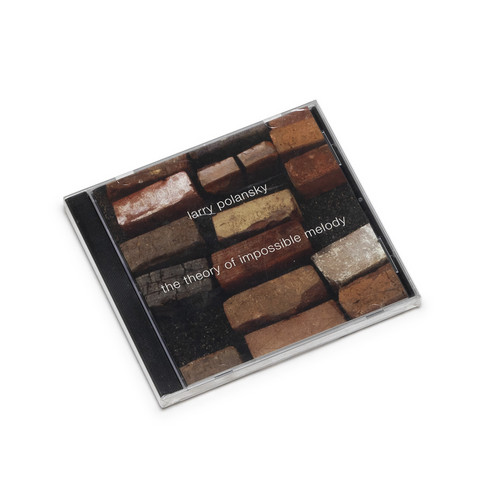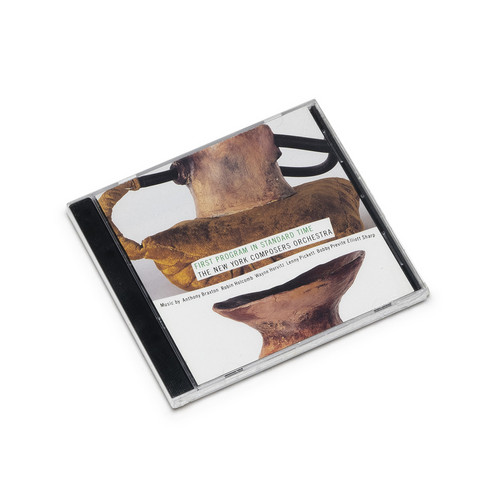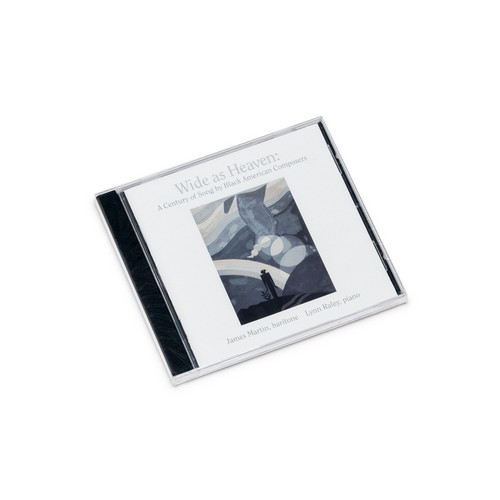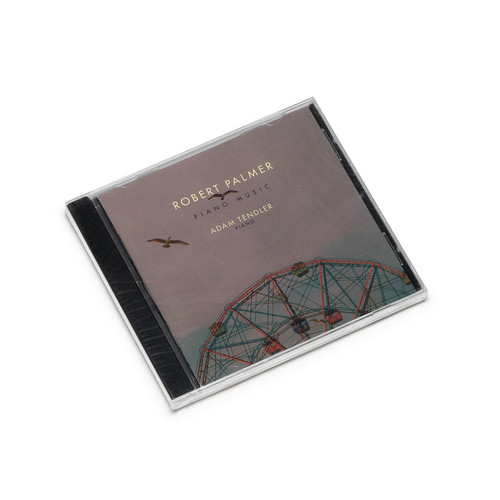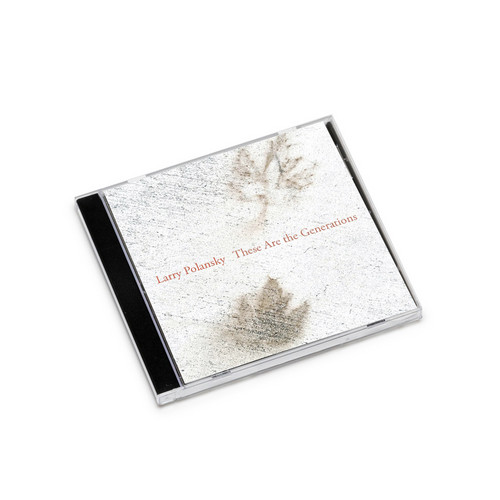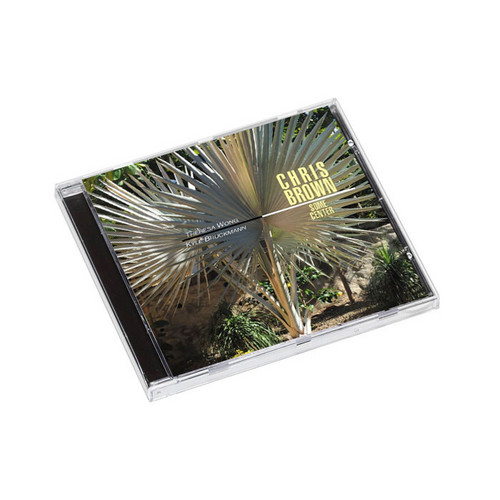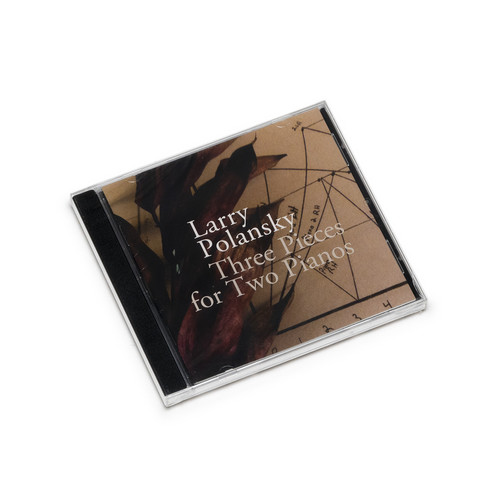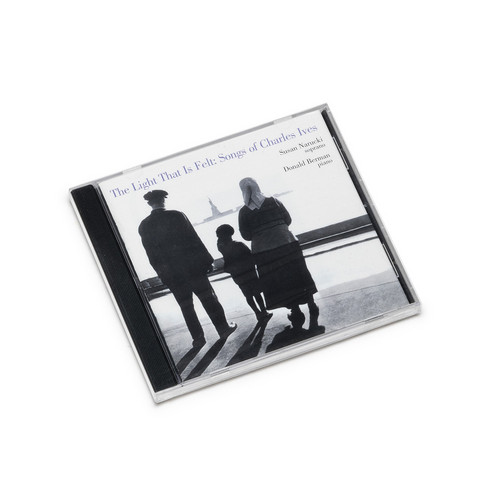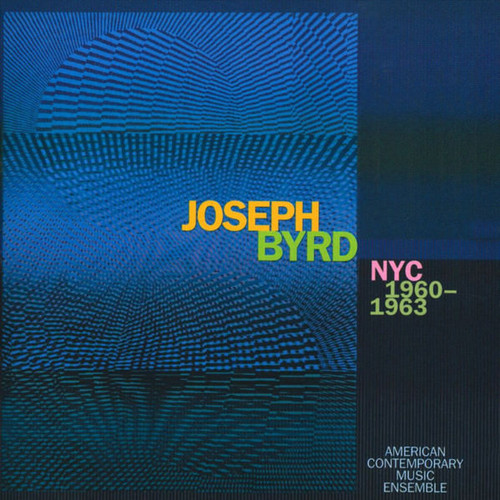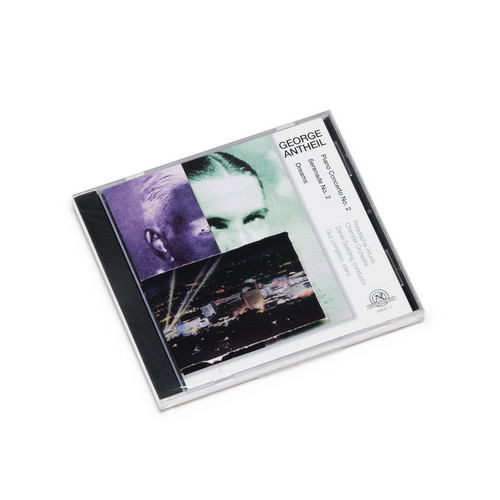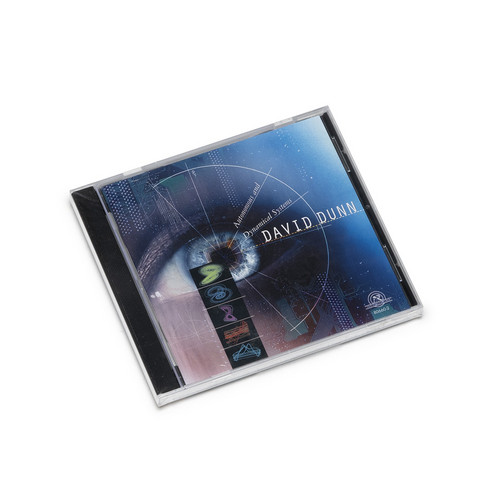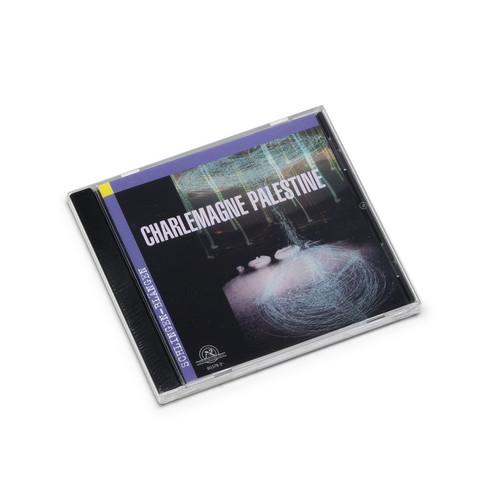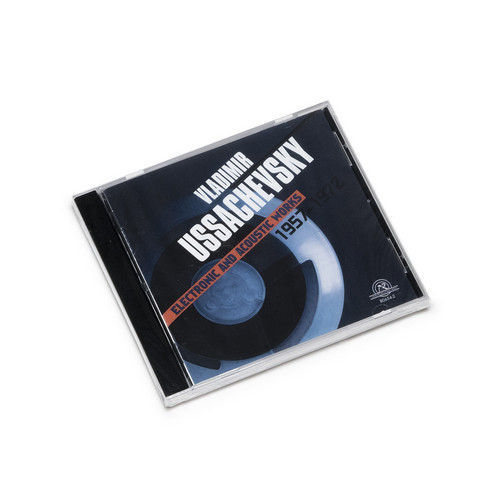Search (1 labels)
12²
1998 release ** "Wendy Mae Chambers (b 1953) is known for the scope and originality of her works, typified by large and unusual instrumental combinations. In Chambers’s own words, Twelve² is a voodoo tone poem in eleven movements for twelve percussio…
Conduction #28: Cherry Blossom, conduction #31: Angelica
1995 release ** Conduction #28: Cherry Blossom: P3 Art and Environment, Tokyo, Japan; March 28, 1993Yukihiro Isso, nokan; Shonosuke Okura, ohtsuzumi; Makiko Sakurai, shomyo, music box; Michihiro Sato, tugaru syamisen; Kizan Daiyoshi, shakuhachi; Yuji…
Vespers and Other Early Works
Alvin Lucier is best known for his pioneering work in the mid-sixties in the exploration of sonic environments, particularly sounds that we would never perceive under ordinary circumstances. Vespers and Other Early Works restores to the catalog sever…
Cecil Taylor Unit
This record presents further evidence of Cecil Taylor’s genius and awesome ability to work within the group context, in which he furthers his exploration of the piano “as catalyst feeding material to soloists in all registers.” This music at times ge…
From Japan
Robert Carl (b 1954) has long been interested in Japanese music and culture, and in the spring of 2007 he received a grant from the Asian Cultural Council to travel to Japan to interview Japanese composers between the ages of thirty and sixty—his con…
Lejaren Hiller: A Total Matrix of Possibilities
Lejaren Hiller (1924-1994) was a musically eclectic composer, often combining several different types of techniques in the same piece. In the mid-sixties, he asserted that his "objective in composing music by means of computer programming is not t…
'Waves breaking on rocks
Peter Garland (b. 1952) studied with Harold Budd and James Tenney at Cal Arts and had long student-mentor friendships with Lou Harrison, Conlon Nancarrow, Paul Bowles and Dane Rudhyar. Like Harrison, Garland has forged his own musical vocabulary as a…
Ending(s)
While certain recognizable fingerprints are found throughout the body of Daniel Lentz's (b. 1942) work, he has never been content to settle within one particular style or mode of music for long, moving ever forward in an evolutional continuum, an ove…
Six Seasons
Tip! "A cycle of six movements and a coda, Six Seasons is as protean as the ocean waters that serve as its substance and underlying metaphor. In creating a space of many spaces and multiple temporalities, Lei Liang (b. 1972) resides in select company…
Dialogues and Contrasts / Colloquy
The title Dialogues and Contrasts describes the nature of the exchange which takes place between the performer and the materials committed to tape. In the first movement the exchange is more in the nature of an argument. Though initially each side ap…
Five Works For Voices, Instruments, And Electronics
Kenneth Gaburo (1926–1993) composed works for instruments, voices, electronics, multi-media, theater, and a variety of other resources. Foremost among his many interests was a concern with the voice and with language—how we shape language and how we …
Rewild
Inspired by the perspectives and timescales of nonhuman beings and distant orders of magnitude in the universe of life, Rewild seeks new strata in musical parameters, exploring the uncanny zones at which pitch becomes rhythm, harmonic interval become…
New Music for Four Guitars
The guitar is the popular instrument par excellence. As apt for Brazilian sambas for Irish ballads or American blues, the guitar has also recently been adapted as a surrogate for plucked instruments from non-Western musical traditions; no idiom seems…
Hyo- shin Na: All the Noises
Ocean/Shore 2 (2003) is one of a series that are studies on the use of diverse materials and on the coexistence, within a piece of music, of various instruments. As in the meeting and interaction of water and land, these instruments can have fundamen…
Dreamers of Pearl
Joseph Kubera, piano. Michael Byron (b. 1953) was a pupil of James Tenney, and later, of Richard Teitelbaum. The body of music he has composed over the past thirty years has been harmonically rich, rhythmically detailed, and increasingly virtuosic. D…
Desolation Pops
"James Moore (b. 1979) is a composer with an eye toward the world of games and experimental theater. He’s an electric guitarist who’s willing and eager to treat his instrument as a playground, not a reverent, static tradition. He’s a tinkerer, a char…
Folding Music
Max Giteck Duykers (born 1972) stands out for his ongoing dedication to the sound worlds made possible by the Pierrot ensemble. Therefore it is fitting that the first recording devoted exclusively to Duykers's music should feature two of the four "Pi…
Three Pieces in Polytempic Polymicrotonality
The author of these notes has spent his life explaining radical music, and the music on this disc may be the most radical I've ever written about. Peter Thoegersen (b. 1967) is not yet a name known to the music world; not for any lack of connection t…
O, O, O, O, That Shakespeherian Rag
O,O,O,O, That Shakespeherian Rag collects six of the most important compositions from his relatively small body of work. By the late 50s Martirano had begun to freely incorporate elements of jazz and popular music. O,O,O,O, That Shakespeherian Rag(19…
Seven Deserts
Wrestling with the notion of balancing both formal construction and creative spontaneity has allowed Scott Fields (b 1952) to compose a powerful body of work with ties to extramusical concerns from the realms of literature, philosophy, and science. S…
Underwater Princess Waltz
Underwater Princess Waltz is a bold and imaginative project by the Belgian/Dutch electric guitar quartet Zwerm, featuring a vibrant collection of “one-page pieces” by leading figures in American experimental music: Karl Berger, Earle Brown, Alvin Cur…
Sound Forms for Piano: Cage/ Cowell/ Johnston/ Nancarrow
“... in the past, the point of disagreement has been between dissonance and consonance, it will be, in the immediate future, between noise and so-called musical sounds.” — John Cage The most characteristic features of American music are its eclectic…
Mass/Seven Pious Pieces
This collection of two tonal works by composers known for their non-tonal compositional style is a fine example of contemporary approaches to sacred choral music. Salvatore Martirano’s Mass is a setting of a traditional Latin Mass whilst Donald Marti…
Assemblage
George Lewis (b 1952) combines an astonishing level of creativity with trenchant critiques of many traditional conceptions about experimental music. The four compositions on this album reference a wide range of ideas, from rhetoric in Ancient Rome to…
Lower Limit
The immersive sonic textures that characterize Michael Winter's (b 1980) music are crafted from comprehensive lists of data, with each composition encompassing a musical question that is addressed algorithmically. A performance lasts for as long as i…
Music for Woodwinds
Through her novel approaches to texture and melody, German-American composer Johanna Magdalena Beyer (1888–1944) became one of the most distinctive modernist voices of the mid-20th century. Beyer was the first woman known to have composed for electri…
Michael Pisaro-Liu: Radiolarians
Radiolorians (2018) finds Pisaro-Liu drawing inspiration from another gifted observer of this world-in-variation, the German zoologist, naturalist, and philosopher Ernst Haeckel (1834–1919), who promoted and popularized evolutionary thought via exten…
Gertrudes
Music for violin and resonator guitar by Robert Ashley, Lainie Fefferman, Paula Matthusen, James Moore, Larry Polansky and Ken Thomson. Longtime friends and collaborators James Moore and Andie Springer began performing as a duo in 2011 while on to…
Space Guitars
**2020 stock** I was born in Detroit (1931), studied chemistry and music at Princeton (1949–53), and after the army, pro-baseball, and working as a chemist at Cape Canaveral, I went to “Koln State” (Music School) in Germany on the GI Bill, (1959-63) …
Duo, Fives, Quintet, Trio
Born in Michigan but for most of his life a true Californian, Robert Erickson (1917-1997) had a reputation as a maverick. His musical path was never a straight line, nor, really, a line at all but a landscape, with ranges of features rather than mere…
Philomel
Compositions performed by Bethany Beardslee and Lynne Weber (sopranos), Jerry Kudern and Robert Miller (pianos). The four works on this recording span a period of a decade and are among the best of Milton Babbitt’s output, tape and otherwise. Philome…
Musing And Reminiscence
Ezra Sims (1928-2015) was known mainly as a composer of microtonal music. Surrounded by world-class performers who championed his music, he produced a large number of chamber and solo, choral, and two orchestral works. With his unwavering commitment …
Glorious Ravage
Glorious Ravage is a panoramic free jazz song cycle by San Francisco Bay Area bassist and composer Lisa Mezzacappa, that features a large ensemble of stellar California improvisers performing with films created by Bay Area moving image artists Janis …
Io
Born in Michigan but for most of his life a true Californian, Robert Erickson (1917-1997) had a reputation as a maverick. His musical path was never a straight line, nor, really, a line at all but a landscape, with ranges of features rather than mere…
3 Phasis
3 Phasis is the companion disc to the Cecil Taylor Unit, both set down over four miraculous days in April 1978. It too is a testament to the perfectionism and unpredictability that are hallmarks of Taylor's music. As always, he is the instigator and…
Postcard From Heaven
The harp is a strange and compelling instrument that in its technological ancientness beckons composers and listeners alike to bask in its heavenly aura. Like hand drums and acoustic guitars, the immediacy of a harp's sound production demands an inti…
Lonesome Road (The Crawford Variations)
Larry Polansky, though known primarily for his work in the field of computer music, has produced a major addition to the keyboard literature, this massive theme-and-variations on Ruth Crawford Seeger’s arrangement of the folk song "Lonesome Road." In…
A mist is a collection of points
Michael Pisaro (b. 1961) is a member of the Wandelweiser collective, an international organization of musicians which he has defined as 'a particular group of people who have been committed, over the long term, to sharing their work and working to…
Piano plus
Piano Music 1963-1998. Piano Plus is a collection of six piano pieces written by Richard Teitelbaum (b. 1939), a pioneer of interactive electronic and computer music, between 1963 and 1998. Piano Plus illustrates the use of cutting-edge technology to…
We, Like Salangan Swallows...: A Choral Gallery of Morton Feldma
The intense individuality of Morton Feldman's (1926?1987) art and its 'painterly' aspect have tended to push his rich output of works into a zone all of their own, surrounded by a moat of stillness. This recording attempts the reverse process -- to b…
Clusters: American Piano Explorations
Rory Cowal is a distinctive pianist, one who draws liberally on classical chops, ample experience with improvisation, and a predilection for the new and uncharted. This makes him especially attractive to composers who wish to blur the boundaries betw…
Sonatas
Lejaren Hiller (1924-1994) is, understandably, best known for his computer-assisted compositions and works utilizing electronics. The three pieces included in this collection span a crucial fifteen-year period in Hiller's career. The first was writte…
The Arrow Of Time
We want to fabricate a new music. We imagine a situation in which the sounding together of tones is never taken for granted, is continually renewed and reinvented. We know that the effect of any set of simultaneous tones, by means of the multiplicati…
On Procedural Grounds
In his compositions, composer/performer Kyle Bruckmann seeks to integrate rigor and internal logic with raw immediacy while fully engaging his fellow performers as not simply dutiful interpreters, but creatively invested collaborators. Aesthetically,…
Granular Modality
In many respects Earl Howard’s (b. 1951) music is an anomaly that resists categorization and the seductiveness of genre. He is an important force in improvised music and yet his work employs complex structures and rigorous transitions of sound and te…
Six Primes
Six Primes is composed using the first six prime numbers 2, 3, 5,
7, 11, and 13 to govern both its tuning and temporal structure,
including harmony, rhythmic subdivisions, and form. I wrote this music
to explore the limits of using the same intege…
Palm Sunday
An insatiable listener, learner, and reader, Stuart Saunders Smith (b. 1948) has taken into his mind and spirit myriad styles of musical performance spanning centuries, methods of compositional practice of all sorts, and innumerable close personal re…
The theory of impossible melody
Larry Polansky (1954–2024) was a visionary American composer, guitarist, theorist, and educator whose work forged deep connections across mathematics, computer science, intonation theory, and experimental music. His compositions-performed here by col…
The New York Composers Orchestra: First Program in Standard Time
Acoustic jazz recording featuring Holcomb's eleven-minute title-track, Lenny Pickett's ten-minute Dance Music for Composer Orchestra, Elliott Sharp's eight-minute Skew and Horvitz's nine-minute Paper Money and an eleven-minute composition by Anthony …
Wide as Heaven: A Century of Song by Black American Composers
"This collection of songs represents one hundred years of music produced by American composers and poets of color—the best of us. Some identify(ied) as Negro, some African-American, some Black, some men, some women, and some insisted they were beyond…
Piano Music
Robert Palmer (1915-2010) produced more than ninety symphonic, choral, chamber, and solo works throughout his career, earning a reputation in the mid-twentieth century as one of the country's leading, most daring, and -- at the same time -- appealing…
These Are the Generations
The title of this recording has multiple meanings for its composer, Larry Polansky (b 1954). These are the generations... is a translation of the Hebrew title for the second work on the program, Eleh Tol'd'ot, the first words of the thirty-fifth vers…
Some Center
Chris Brown’s (b. 1953) compositions Some Centre (2019) and First Light (2016), performed with such assured lucidity and subtle shading by the three members of The Chromelodia Project, engage with significant precursors in music and in literature, dr…
Three Pieces for Two Pianos
This album exemplifies the depth to which Larry Polansky (b. 1954) explores and connects different musical ideas: In Three Pieces for Two Pianos and Old Paint, mathematical models and algorithmic processes are used to set folk songs; in k-toods, simp…
The Light That Is Felt - Songs of Charles Ives
Charles Ives composed nearly 200 songs throughout his life. Wiley Hitchcock, in the thorough introduction to his 2004 critical edition 129 Songs, described the Ives song canon as the contents of a kind of scrapbook or commonplace book or chapbook, or…
Nyc 1960-1963
Recordings of works by Joseph Byrd, student of Morton Feldman and John Cage and frontman for The United States Of America, are finally available by the American Contemporary Music Ensemble via New World Records.Byrd collaborated with a number of Flux…
George Antheil: Piano Concerto No. 2
The Piano Concerto No. 2 is an experiment in classical form. The work contains the same sudden juxtapositions and abrupt contrasts of mood as his futurist music. But the excesses of his recent Ballet mécanique are compensated for by an almost spare, …
Autonomous and dynamical systems
A relentless explorer, composer, performer and theorist, David Dunn (b 1953) uses electro-acoustic resources, voice, non-human living systems, as well as traditional instruments. A creator of text-sound compositions, environmental installations, work…
Schlingen Blängen
Schlingen Blängen is an invaluable addition to the slender but precious discography of Charlemagne Palestine, one of the legendary figures of the amazingly fertile New York and West Coast experimental music/art scene of the sixties and seventies. He …
Vladimir Ussachevsky: Electronic and Acoustic Works 1957- 1972
16-page booklet including liner notes in English. This composer portrait is dedicated to Vladimir Ussachevsky (1911–1990), a pioneering figure in electronic and choral music. The album features six of his groundbreaking works in electronic music alon…
